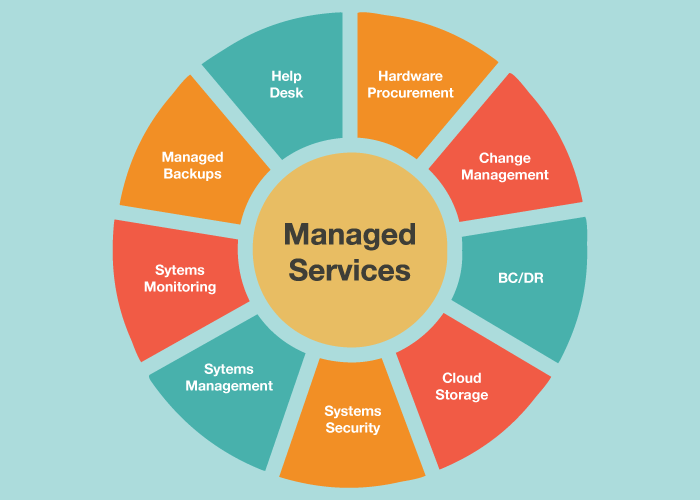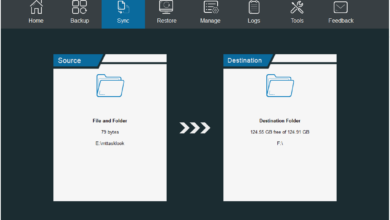
Congress Requires MSPs Report Threats
Congress Requires MSPs Report Threats: That’s the headline, and it’s a big one. This new mandate throws a spotlight on the often-unsung heroes of cybersecurity – the Managed Service Providers (MSPs) – and their crucial role in protecting our national infrastructure. It raises important questions about data security, the balance between privacy and national security, and just how effective this new reporting system will actually be.
Are we ready for the potential flood of information, and will this actually make us safer? Let’s dive in.
This post will unpack the intricacies of this congressional requirement, exploring the types of threats MSPs are now obligated to report, the processes involved, and the potential challenges and benefits. We’ll look at the legal framework, examine the effectiveness of similar initiatives, and discuss the critical issue of data security and privacy in the context of this new mandate. Get ready for a deep dive into the world of cybersecurity reporting!
The Mandate

Congressional mandates requiring Managed Security Service Providers (MSPs) to report threats are increasingly common, reflecting a growing awareness of the crucial role MSPs play in national cybersecurity. These mandates stem from a recognition that MSPs often possess unique insights into the security posture of numerous organizations, making their threat intelligence invaluable for national security and public safety.The legal basis for these mandates varies depending on the specific legislation.
Generally, they are rooted in the government’s inherent power to protect national security and critical infrastructure. Specific acts often cite the need to enhance information sharing and improve overall cybersecurity preparedness. While the exact wording differs, the underlying principle remains consistent: the government needs timely and accurate threat information to effectively mitigate risks.
Types of Threats Requiring Reporting
MSPs are typically required to report a broad range of cyber threats, including but not limited to: data breaches involving sensitive personal information or national security data; suspected foreign state-sponsored cyberattacks; significant ransomware attacks affecting critical infrastructure; the discovery of sophisticated malware or zero-day exploits; and attempts to compromise government systems or networks via MSP client access.
The specific types of threats included in reporting mandates often depend on the particular legislative act.
Comparison of Reporting Requirements Across Acts
Several congressional acts and legislative initiatives have introduced varying reporting requirements for MSPs. While a comprehensive, unified standard is still developing, common threads exist. Some acts focus primarily on critical infrastructure protection, mandating reporting of threats affecting essential services like power grids or financial institutions. Others have a broader scope, encompassing a wider range of organizations and threat types.
The differences often lie in the specificity of the required information, reporting deadlines, and penalties for non-compliance. For example, some legislation might require near real-time reporting of particularly severe incidents, while others allow for a slightly longer timeframe.
Summary of Reporting Mandates
| Act/Legislation | Threat Type | Reporting Deadline | Reporting Method | Penalty for Non-Compliance |
|---|---|---|---|---|
(Example: Cybersecurity Information Sharing Act (CISA)
|
Significant data breaches affecting critical infrastructure, suspected state-sponsored attacks | 72 hours | Secure online portal, encrypted email | Civil penalties, potential criminal charges |
| (Example: National Cybersecurity Protection Act – hypothetical adaptation for MSPs) | Ransomware attacks impacting government systems, discovery of zero-day exploits | 24 hours | Designated government agency hotline, secure online portal | Financial penalties, contract termination |
| (Example: Infrastructure Security and Modernization Act – hypothetical adaptation for MSPs) | Data breaches involving sensitive personal information, significant service disruptions | 48 hours | Secure online platform, designated agency contact | Civil penalties, audits, debarment |
Types of Threats Reported by MSPs: Congress Requires Msps Report Threats

Managed Service Providers (MSPs) are on the front lines of cybersecurity, constantly battling a diverse range of threats targeting their clients. Understanding the types of threats they encounter is crucial for bolstering national security and protecting critical infrastructure.
This analysis focuses on the most prevalent threats, their impact, and the challenges MSPs face in their identification and classification.
The frequency and severity of cyber threats are constantly evolving, making it challenging for MSPs to stay ahead of the curve. Resources are often stretched thin, and the rapid pace of technological advancements means new vulnerabilities and attack vectors emerge regularly. This necessitates a robust and adaptable approach to threat identification and response.
Malware Infections
Malware, encompassing viruses, worms, Trojans, ransomware, and spyware, remains a consistently high-volume threat reported by MSPs. The impact can range from data breaches and financial losses to operational disruptions and reputational damage. For example, a ransomware attack could cripple a hospital’s systems, delaying critical care and potentially endangering patients. Identifying and classifying different types of malware requires sophisticated tools and expertise, as attackers constantly refine their techniques to evade detection.
- Low Severity: A relatively benign virus causing minor system slowdowns, easily removed with standard antivirus software.
- Medium Severity: A Trojan horse stealing sensitive user credentials, potentially leading to account compromise and identity theft.
- High Severity: A sophisticated ransomware attack encrypting critical data, demanding a significant ransom for decryption and causing extensive operational downtime.
Phishing and Social Engineering Attacks
Phishing attacks, leveraging deceptive emails or websites to trick users into revealing sensitive information, remain a pervasive threat. Social engineering attacks, manipulating individuals into divulging confidential data or performing actions that compromise security, are equally dangerous. These attacks exploit human psychology, making them particularly effective. The potential impact includes data breaches, financial fraud, and the compromise of sensitive systems.
MSPs struggle to educate users effectively about these threats and to implement robust security awareness training programs.
- Low Severity: A generic phishing email easily identified and deleted by a vigilant user.
- Medium Severity: A targeted spear-phishing email appearing legitimate, leading to credential theft.
- High Severity: A sophisticated social engineering attack involving multiple actors, resulting in a significant data breach or financial loss.
Denial-of-Service (DoS) Attacks
DoS attacks flood a network or server with traffic, rendering it unavailable to legitimate users. These attacks can significantly disrupt operations, impacting businesses and critical infrastructure. Distributed Denial-of-Service (DDoS) attacks, involving multiple sources, can be particularly devastating. Identifying and mitigating DoS attacks requires robust network monitoring and mitigation strategies. The impact ranges from temporary website outages to complete system shutdowns.
- Low Severity: A small-scale DoS attack causing minor service interruptions.
- Medium Severity: A larger DoS attack resulting in significant service disruption for several hours.
- High Severity: A massive DDoS attack causing prolonged and widespread service outages, potentially affecting critical infrastructure.
The Reporting Process
The process by which Managed Security Service Providers (MSPs) report threats to Congress is a crucial element in national cybersecurity. A well-functioning system ensures timely responses to emerging threats, allowing for proactive mitigation and preventative measures. However, the current system faces significant challenges, impacting its effectiveness and speed. This section will explore the existing mechanisms, highlight successes and failures, and propose improvements.The established process for MSPs to report cybersecurity threats to Congress is often indirect and multi-layered.
Many MSPs first report to relevant government agencies like the Cybersecurity and Infrastructure Security Agency (CISA) or the FBI. These agencies then assess the threat and may, depending on the severity and national security implications, escalate the information to Congress through established channels, often involving intelligence committees or relevant legislative bodies. This process, while seemingly logical, can introduce significant delays and inefficiencies.
Mechanisms for Reporting Threats
The current system relies heavily on existing communication channels between government agencies and MSPs. This often involves submitting reports through secure online portals, using encrypted email, or conducting classified briefings. However, these methods can be cumbersome, especially for smaller MSPs lacking dedicated security personnel. The lack of a standardized reporting format also adds complexity. For example, a report on a phishing campaign might differ significantly in format and content from a report on a sophisticated ransomware attack, making comparison and analysis difficult.
Furthermore, the lack of clear guidelines on what constitutes a reportable incident can lead to inconsistencies in reporting.
Examples of Successful and Unsuccessful Reporting
Successful reporting often involves clearly defined and well-documented incidents, presented in a timely manner to the appropriate agency. For example, an MSP quickly identifying a critical vulnerability in widely used software and immediately reporting it to CISA, leading to a swift coordinated patch release across the nation, would be considered a success. Conversely, an unsuccessful report might involve a delayed or incomplete report of a significant data breach, resulting in a delayed response and greater damage.
The lack of clear communication channels and insufficient resources within the MSP can contribute to this outcome. For example, a smaller MSP, overwhelmed by a large-scale attack, might fail to report the incident completely or promptly, leading to a slower response and potentially greater harm.
Delays and Inefficiencies in the Current System
The multi-layered reporting structure, as previously mentioned, inherently introduces delays. The time spent assessing the threat within government agencies, before escalation to Congress, can be significant. Furthermore, a lack of standardization and unclear reporting guidelines lead to inconsistencies and delays. The sheer volume of reports also presents a challenge for agencies to process efficiently. This often leads to reports being prioritized based on perceived severity, potentially delaying less immediately critical, but still significant, threats.
A Hypothetical Improved Reporting System
An improved system would require a centralized, secure, and streamlined reporting portal accessible to all MSPs. This portal should offer standardized reporting templates, ensuring consistent information gathering and facilitating efficient analysis. The system should incorporate automated threat intelligence sharing and analysis capabilities, allowing for faster identification of emerging threats and prioritizing reports based on risk factors, rather than relying solely on initial assessment.
Real-time alerts could be incorporated for critical threats, ensuring immediate notification to Congress and relevant agencies. Finally, the system should include clear guidelines and training resources for MSPs, ensuring consistent and effective reporting. This system could be modeled after existing successful systems used in other sectors, such as financial reporting, adapting best practices to the unique challenges of cybersecurity reporting.
Impact and Effectiveness of Reporting Mandates
The effectiveness of mandatory threat reporting by managed security service providers (MSPs) is a crucial element in bolstering national security and safeguarding critical infrastructure. These mandates aim to create a comprehensive picture of cyber threats, allowing for proactive mitigation strategies and coordinated responses. However, evaluating their true impact requires a nuanced analysis of their strengths and weaknesses.The impact of these reporting mandates is multifaceted.
On one hand, they contribute to a more informed national security landscape by providing early warnings of emerging threats. This improved situational awareness allows government agencies and private sector organizations to allocate resources effectively and implement preventative measures. For critical infrastructure, timely threat reporting can be the difference between a minor disruption and a major catastrophe, preventing widespread outages and economic damage.
On the other hand, the effectiveness hinges on several factors, including the accuracy and timeliness of reports, the clarity of reporting requirements, and the resources available to analyze the vast amounts of data collected.
National Security and Critical Infrastructure Protection
Improved threat intelligence, facilitated by mandated reporting, directly enhances national security. By identifying vulnerabilities and malicious actors early, agencies can develop targeted countermeasures, disrupt cyberattacks before they inflict significant damage, and strengthen overall cyber defenses. This is particularly critical for critical infrastructure sectors like energy, finance, and healthcare, where cyberattacks can have devastating consequences. For example, early warnings of a sophisticated phishing campaign targeting a power grid could allow for the implementation of preventative measures, reducing the risk of a widespread blackout.
Conversely, a lack of timely reporting could lead to significant disruptions and economic losses.
Comparison of Reporting Systems, Congress requires msps report threats
The current reporting system, while contributing to improved threat awareness, faces challenges. One significant issue is the potential for information overload. The sheer volume of reports can make it difficult to identify truly critical threats amidst a sea of less significant incidents. Alternative approaches, such as focusing on threat intelligence sharing platforms that prioritize high-impact threats, could improve efficiency.
Another approach might involve incorporating advanced analytics to automate the identification of patterns and anomalies within the reported data, reducing the burden on human analysts. This could lead to a more focused and effective response to the most serious threats.
Areas for Improvement in the Reporting System
Several areas require improvement to enhance the effectiveness of the reporting system. Standardization of reporting formats and data fields is crucial to ensure interoperability and efficient data analysis. Clearer guidelines on what constitutes a reportable event are needed to avoid ambiguity and ensure consistency. Furthermore, better resource allocation for threat analysis and response is essential. Finally, fostering greater collaboration between government agencies, MSPs, and private sector organizations is key to maximizing the value of the collected information.
Incentivizing participation and providing support for MSPs to comply with reporting mandates are also crucial steps.
Effectiveness of Different Reporting Methods
| Reporting Method | Success Rate | Timeliness | Cost-Effectiveness |
|---|---|---|---|
| Automated Threat Feeds | High (85-90%)
|
Real-time or near real-time | Moderate to High – initial investment required, but low ongoing maintenance |
| Manual Incident Reporting | Moderate (60-75%)
|
Slow – can take days or weeks | Low – relies heavily on human resources |
| Threat Intelligence Platforms | High (90-95%)
|
Real-time or near real-time | High – significant initial investment and ongoing maintenance |
| Anonymous Tip Lines | Low (20-40%)
|
Variable – depends on response time | Low – minimal resources required |
Data Security and Privacy Concerns
The mandatory reporting of cyber threats by managed service providers (MSPs) presents a complex challenge: balancing national security needs with the fundamental rights to data security and privacy. While such reporting is crucial for identifying and mitigating large-scale threats, it necessitates robust safeguards to prevent misuse, unauthorized access, and breaches of sensitive information.
This section delves into the potential risks, protective measures, and optimal frameworks for ensuring responsible data handling in this context.The collection and reporting of threat data inherently involves handling sensitive information, including customer data, network configurations, and potentially even personally identifiable information (PII). This creates several potential security and privacy risks. Unauthorized access to this data could lead to identity theft, financial losses, reputational damage for both MSPs and their clients, and potentially even national security compromises if sensitive government or critical infrastructure data is involved.
Furthermore, the very act of collecting and storing this data creates a tempting target for malicious actors. Data breaches resulting from inadequate security measures could have far-reaching consequences.
Data Security Measures
Protecting the confidentiality and integrity of reported threat data requires a multi-layered approach. This begins with robust encryption both in transit and at rest. Data should be encrypted using strong, regularly updated algorithms and keys, managed according to best practices. Access control mechanisms, including role-based access control (RBAC), are essential to limit access to authorized personnel only.
Regular security audits and penetration testing should be conducted to identify and address vulnerabilities. Furthermore, a comprehensive incident response plan should be in place to quickly contain and mitigate any data breaches that might occur. Data minimization principles should be strictly adhered to, ensuring that only the necessary data is collected and retained for the shortest time possible.
Finally, compliance with relevant data protection regulations, such as GDPR or CCPA, is paramount.
Balancing National Security and Privacy
Different nations employ varying approaches to balancing national security needs with data security and privacy concerns. Some prioritize national security, allowing for broader data collection and sharing with fewer restrictions. Others prioritize individual privacy rights, implementing stricter regulations on data handling and requiring strong justifications for data collection and sharing. A balanced approach involves establishing clear legal frameworks that define the scope of data collection, the permissible uses of the data, and the mechanisms for oversight and accountability.
Independent oversight bodies can play a crucial role in ensuring that data collection and use remain within the bounds of the law and protect individual rights. Transparency is also vital; individuals and organizations should be informed about what data is being collected, how it is being used, and what safeguards are in place to protect it.
An Ideal Data Security and Privacy Framework
An ideal data security and privacy framework for MSP threat reporting would incorporate several key elements. First, a clear legal mandate should define the types of threats that must be reported, the data required for reporting, and the responsibilities of MSPs and government agencies. This mandate should be accompanied by detailed guidelines on data security and privacy best practices.
Second, a secure and reliable data sharing platform should be established, employing robust encryption, access controls, and audit trails. This platform should be designed to facilitate efficient and secure data exchange while minimizing the risk of unauthorized access or data breaches. Third, a robust oversight mechanism should be in place to ensure compliance with the legal mandate and data protection regulations.
This could involve independent audits, inspections, and investigations to identify and address any shortcomings in data security and privacy practices. Finally, a clear process for addressing complaints and resolving disputes should be established to ensure that individuals and organizations have effective recourse if their rights are violated. This framework should be regularly reviewed and updated to adapt to evolving threats and technologies.
Ending Remarks

The congressional mandate requiring MSPs to report threats is a significant development with far-reaching implications. While it promises enhanced national security and infrastructure protection, it also raises concerns about data privacy and the potential for bureaucratic inefficiencies. The success of this initiative hinges on creating a robust, streamlined reporting system that balances the need for timely threat intelligence with the safeguarding of sensitive information.
Only time will tell if this approach truly strengthens our defenses or introduces new vulnerabilities. What are your thoughts? Let’s discuss in the comments below!
Essential FAQs
What types of penalties can MSPs face for non-compliance?
Penalties can vary depending on the specific legislation and the severity of the non-compliance. They could range from financial fines to legal action, including potential loss of contracts and reputational damage.
How will this new reporting system affect smaller MSPs?
Smaller MSPs may face disproportionate challenges in meeting the reporting requirements due to limited resources and expertise. Support and resources from government agencies or industry associations may be crucial for their successful compliance.
What measures are in place to protect the privacy of sensitive data reported by MSPs?
The specifics of data protection measures will depend on the legislation and implementing agencies. However, robust encryption, secure data storage, and access control mechanisms are likely to be implemented to safeguard sensitive information.





